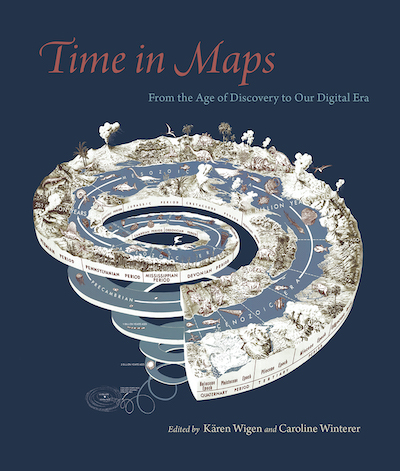地图反映的不只有空间,还有时间。
本书指出在当今数位地图把时间感插入地图空间媒介的举措,在纵观过去五百年之间早已存在。合编本书的两位历史学家KärenWigen和Caroline Winterer集结了着名学者来研究世界各地的地图是如何以巧妙和挑衅的方式来描绘时间。
本书着眼於西班牙丶美洲丶欧洲丶美国和亚洲所绘制的地图,从阿兹特克人绘制的特诺奇提特兰(Tenochtitlán)地图,到早期的现代日本人重建西方入侵之前的怀旧地景风貌的地图,再到十九世纪美国人努力解决「深时」(deep time)的新概念等等一一探究。本书还介绍了数位地图绘制者William Rankin为传统纸质地图的辩解。本书收录一百多幅精彩的彩色地图和插图,对於制图史有浓厚兴趣的人,本书绝对不容错过。
关於作者
Kären Wigen 是斯坦福大學教授 Frances and Charles Field Professor of History.
Caroline Winterer 是斯坦福大學教授 William Robertson Coe Professor of History and American Studies。
书评
“As wide-ranging, imaginative, and revealing as the maps they discuss, these essays follow the trace laid down by the editors and William Rankin’s magisterial opening essay. They track how maps—interpreted broadly—convey time as well as space. GIS, they contend, has not rendered old paper maps obsolete as much as revealed their wonders—their dynamism, their depth, their metaphors, their techniques, and their connections to not only a physical world but to other intellectual endeavors. They convey the magic not only of maps but of scholarship.”
-- Richard White, Stanford University
“What a relief to move beyond the worn dichotomy between maps and timelines, geography and history! Time in Maps shows definitively that maps brim with temporal references, both overt and subtle. They represent moments that range from one protest march to centuries of slavery, or a year’s erosion along Cape Cod to the deep time of geological eons. Cartographers’ visual strategies include encodings of time as much as symbolic representations of objects in space. Contrary to popular opinion, printed maps are anything but ‘static’ once one learns to recognize how they in fact hold time in the embrace of space. Time in Maps is a wonderful book, and one that is long overdue.”
-- Anne Kelly Knowles, University of Maine







